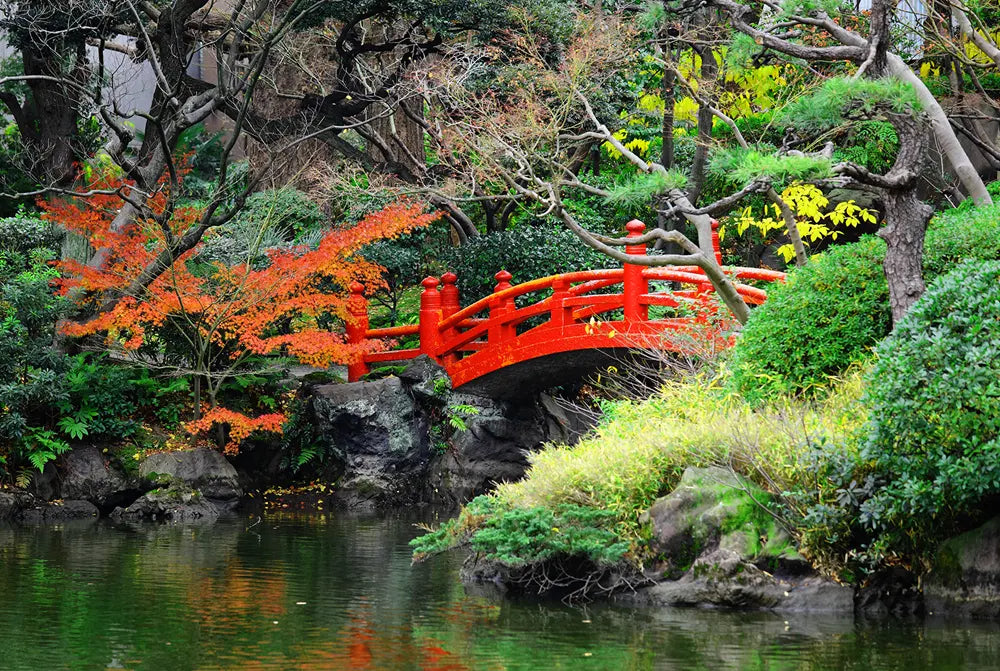According to Japanese legend, the discovery of wasabi can be traced back hundreds of years ago to a remote mountain village. It is said that a curious farmer stumbled upon this unique plant and decided to cultivate it. The farmer's enthusiasm for his newfound treasure led him to showcase it to none other than Tokugawa Ieyasu, a prominent Japanese warlord of that era. Intrigued by the flavor and characteristics of the plant, Ieyasu, who would later become Shogun, declared wasabi a precious commodity, to be exclusively grown in the Shizuoka area.
The cultivation of wasabi in Japan dates back to the tenth century and has gradually spread to other regions such as Taiwan, China, New Zealand, Canada, and the United States. However, it has always retained its reputation for being notoriously difficult to grow. One of the main reasons behind its challenging cultivation lies in its specific requirements. Wasabi thrives in cold, pristine water with just the right balance of minerals. As a result, commercial enterprises now cultivate wasabi in the mountainous environs of the Shizuoka prefecture on the Izu peninsula, as well as in the Azumino plains of the Nagano prefecture.
The art of successful wasabi horticulture has become a closely guarded secret among these producers. With only a handful of dedicated growers worldwide, the supply of genuine wasabi, known as Wasabia japonica, remains limited. On the other hand, the demand for real wasabi has been steadily increasing, leading to a surge in prices. As more people recognize and appreciate the distinctive flavor and health benefits of authentic wasabi, its popularity continues to rise.
One particular variety of wasabi known as "Nishiki-Cho" has an intriguing history attached to it. The story begins with the defeat of the Heike clan in the Dan-noura war, which occurred from the years 795 to 797. The surviving members of the clan sought refuge in various parts of Honshu, Shikoku, and Kyushu. Some settled near Mount Bahun, located in the upriver district of the Nishiki River, where they hoped to find peace.
The Heike survivors, who were once noble samurai and well-versed in the culture of Kyoto, cultivated a deep appreciation for culinary traditions. They discovered that wild wasabi grew abundantly in the valleys of Mount Heike, Mount Mizuo, and Mount Bahun in the Kitani-Kyo watershed. These survivors began using wild wasabi as a seasoning for slices of raw yamame, a type of trout, and raw venison. They also incorporated pickled vegetables made from wasabi stems and leaves, along with other edible wild plants, into their meals. This deep connection between the Heike survivors and wasabi played a significant role in establishing wasabi as the most beloved condiment in Japan.
Fast forward to the Meiji period, specifically the 9th year, when Ichiroku Hashimoto, a resident of Kitakonishi, introduced the first commercial wasabi product called "Kitani-Kyo" Wasabi. Although the exact sales figures are unknown, it is believed that Hashimoto achieved considerable success, earning a remarkable profit of one yen, which was quite significant during that time. This venture catapulted wasabi into the spotlight and spurred its cultivation in the Kitani-Kyo region. At that time, growing techniques were relatively simple, with young wasabi plants transplanted into fields created on the banks of ravines, using roughly arranged stones.
In the Taisho period, specifically the 9th year, a new technique for growing wasabi emerged. Instead of cultivating it in flowing water, farmers began growing wasabi in the conglomeratesoils alongside mountain streams. This method, known as Hatake-Wasabi, allowed for larger-scale production, although it did come at the expense of slightly reduced quality. Nevertheless, the new technique garnered significant attention among farmers due to its ability to yield greater quantities of wasabi. As a result, the cultivation of Hatake-Wasabi became widespread, particularly in the Nishiki-Cho area.
During the Taisho era, which followed, a significant milestone in wasabi cultivation was reached. In the former village of Sugane, accelerated cultivation techniques were introduced using normal fields. This innovation resulted in shorter growing times, better disease control, and increased cost-effectiveness. The introduction of this style of cultivation laid the foundation for further improvements in growing methods, enabling farmers to refine their practices and enhance overall productivity.
In those days, wasabi products were typically harvested two years after planting, ensuring the maturity and quality of the plants. As time went on, advancements in cultivation methods continued to shape the industry, allowing for more efficient and consistent production.
Today, the history of wasabi in Japan stands as a testament to its cultural significance and enduring appeal. From its humble discovery in a remote village to its recognition as a treasure by a powerful warlord, wasabi has come a long way. Its journey has witnessed the efforts of dedicated farmers, the preservation of traditional cultivation techniques, and the adaptation of innovative methods to meet the growing demand.
As we delve into the world of wasabi, it becomes evident that this remarkable plant not only adds a unique flavor to culinary creations but also holds potential as a nutraceutical or pharmaceutical component. The history and heritage of wasabi intertwine with its tantalizing taste and healthful properties, making it a cherished and sought-after ingredient both in Japan and around the globe.

